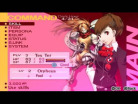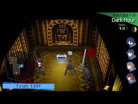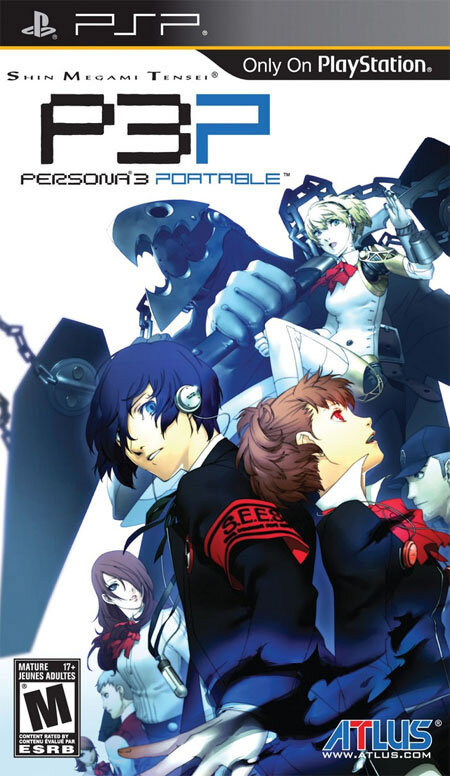- CLASSIC MAGAZINES
- REVIEW CREW
A show recapping what critics thought back
when classic games first came out! - NEXT GENERATION'S BEST & WORST
From the worst 1-star reviews to the best
5-stars can offer, this is Next Generation! - NINTENDO POWER (ARCHIVE)
Experience a variety of shows looking at the
often baffling history of Nintendo Power! - MAGAZINE RETROSPECTIVE
We're looking at the absolutely true history of
some of the most iconic game magazines ever! - SUPER PLAY'S TOP 600
The longest and most ambitious Super NES
countdown on the internet! - THEY SAID WHAT?
Debunking predictions and gossip found
in classic video game magazines! - NEXT GENERATION UNCOVERED
Cyril is back in this spin-off series, featuring the
cover critic review the art of Next Generation! - HARDCORE GAMER MAGAZING (PDF ISSUES)
Download all 36 issues of Hardcore Gamer
Magazine and relive the fun in PDF form!
- REVIEW CREW
- ELECTRONIC GAMING MONTHLY
- ELECTRONIC GAMING MONTHLY RANKS
From Mario to Sonic to Street Fighter, EGM
ranks classic game franchises and consoles! - ELECTRONIC GAMING MONTHLY BEST & WORST
Counting down EGM’s best and worst reviews
going year by year, from 1989 – 2009! - ELECTRONIC GAMING BEST & WORST AWARDS
11-part video series chronicling the ups and
downs of EGM’s Best & Worst Awards!
- ELECTRONIC GAMING MONTHLY RANKS
- GAME HISTORY
- GAME OVER: STORY BREAKDOWNS
Long-running series breaking down game
stories and analyzing their endings! - A BRIEF HISTORY OF GAMING w/ [NAME HERE]
Real history presented in a fun and pithy
format from a variety of game historians! - THE BLACK SHEEP
A series looking back at the black sheep
entries in popular game franchises! - INSTANT EXPERT
Everything you could possibly want to know
about a wide variety of gaming topics! - FREEZE FRAME
When something familiar happens in the games
industry, we're there to take a picture! - I'VE GOT YOUR NUMBER
Learn real video game history through a series
of number-themed episodes, starting at zero! - GREAT MOMENTS IN BAD ACTING
A joyous celebration of some of gaming's
absolute worst voice acting!
- GAME OVER: STORY BREAKDOWNS
- POPULAR SHOWS
- DG NEWS w/ LORNE RISELEY
Newsman Lorne Riseley hosts a regular
series looking at the hottest gaming news! - REVIEW REWIND
Cyril replays a game he reviewed 10+ years
ago to see if he got it right or wrong! - ON-RUNNING FEUDS
Defunct Games' longest-running show, with
editorials, observations and other fun oddities! - DEFUNCT GAMES QUIZ (ARCHIVE)
From online quizzes to game shows, we're
putting your video game knowledge to the test!- QUIZ: ONLINE PASS
Take a weekly quiz to see how well you know
the news and current gaming events! - QUIZ: KNOW THE GAME
One-on-one quiz show where contestants
find out if they actually know classic games! - QUIZ: THE LEADERBOARD
Can you guess the game based on the classic
review? Find out with The Leaderboard!
- QUIZ: ONLINE PASS
- DEFUNCT GAMES VS.
Cyril and the Defunct Games staff isn't afraid
to choose their favorite games and more! - CYRIL READS WORLDS OF POWER
Defunct Games recreates classic game
novelizations through the audio book format!
- DG NEWS w/ LORNE RISELEY
- COMEDY
- GAME EXPECTANCY
How long will your favorite hero live? We crunch
the numbers in this series about dying! - VIDEO GAME ADVICE
Famous game characters answer real personal
advice questions with a humorous slant! - FAKE GAMES: GUERILLA SCRAPBOOK
A long-running series about fake games and
the people who love them (covers included)! - WORST GAME EVER
A contest that attempts to create the worst
video game ever made, complete with covers! - LEVEL 1 STORIES
Literature based on the first stages of some
of your favorite classic video games! - THE COVER CRITIC
One of Defunct Games' earliest shows, Cover
Critic digs up some of the worst box art ever! - COMMERCIAL BREAK
Take a trip through some of the best and
worst video game advertisements of all time! - COMIC BOOK MODS
You've never seen comics like this before.
A curious mix of rewritten video game comics!
- GAME EXPECTANCY
- SERIES ARCHIVE
- NINTENDO SWITCH ONLINE ARCHIVE
A regularly-updated list of every Nintendo
Switch Online release, plus links to review! - PLAYSTATION PLUS CLASSIC ARCHIVE
A comprehensive list of every PlayStation
Plus classic release, including links! - RETRO-BIT PUBLISHING ARCHIVE
A regularly-updated list of every Retro-Bit
game released! - REVIEW MARATHONS w/ ADAM WALLACE
Join critic Adam Wallace as he takes us on a
classic review marathon with different themes!- DEFUNCT GAMES GOLF CLUB
Adam Wallace takes to the links to slice his way
through 72 classic golf game reviews! - 007 IN PIXELS
Adam Wallace takes on the world's greatest spy
as he reviews 15 weeks of James Bond games! - A SALUTE TO VAMPIRES
Adam Wallace is sinking his teeth into a series
covering Castlevania, BloodRayne and more! - CAPCOM'S CURSE
Adam Wallace is celebrating 13 days of Halloween
with a line-up of Capcom's scariest games! - THE FALL OF SUPERMAN
Adam Wallace is a man of steel for playing
some of the absolute worst Superman games! - THE 31 GAMES OF HALLOWEEN
Adam Wallace spends every day of October afraid
as he reviews some of the scariest games ever! - 12 WEEKS OF STAR TREK
Adam Wallace boldly goes where no critic has
gone before in this Star Trek marathon!
- DEFUNCT GAMES GOLF CLUB
- DAYS OF CHRISTMAS (ARCHIVE)
Annual holiday series with themed-episodes
that date all the way back to 2001!- 2015: 30 Ridiculous Retro Rumors
- 2014: 29 Magazines of Christmas
- 2013: 29 Questionable Power-Ups of Christmas
- 2012: 34 Theme Songs of Christmas
- 2011: 32 Game Endings of Christmas
- 2010: 31 Bonus Levels of Christmas
- 2009: 30 Genres of Christmas
- 2008: 29 Controls of Christmas
- 2007: 34 Cliches of Christmas
- 2006: 33 Consoles of Christmas
- 2005: 32 Articles of Christmas
- 2004: 31 Websites of Christmas
- 2003: 29 Issues of Christmas
- 2002: 28 Years of Christmas
- 2001: 33 Days of Christmas
- NINTENDO SWITCH ONLINE ARCHIVE
- REVIEW ARCHIVE
- FULL ARCHIVE
Persona 3 Portable
Think all Japanese role-playing games are the same? Then clearly you haven't played Persona 3. Forget the boring old days of high fantasy and stories about saving the princess, Persona 3 throws out every convention and offers up the most original storyline in a decade. Is it a hack and slash or a dating sim? Now you can get to the bottom of that question on the go, thanks to Persona 3 Portable for the Sony PSP.
You play a teenager who has recently transferred to a brand new high school. But this is no ordinary boy; he has a special power that allows him to see things normal people are oblivious to. As luck would have it, our hero meets up with a whole team of kids with similar powers. It turns out that they have formed a squad that goes out at night and battles the darkness nobody else is even aware of. They're afraid that if these mysterious monsters continue to rip their way into our existence, then it could spell certain doom for our world.
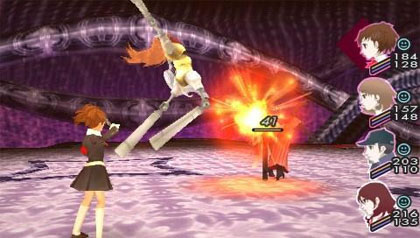
We're informed that every night while most people are sound asleep, this group of commandos will experience an extra hour. It's called the Dark Hour, and it is when the shadow monsters begin their onslaught on our world. In this 25th hour the high school is replaced with a huge tower full of all kinds of creepy crawly demons and monsters. It is your job to ascend this tower, defeating baddies along the way and investigating everything there is to know about this strange structure.
As exciting as battling demons late at night is, you still need to go to school. Unlike most role-playing games, Persona 3 Portable requires you to spend half of your time studying and the other half shoving swords into nightmarish creatures. The truth is, this game is as much a social high school simulator as it is a turn-based adventure game. You need to do well in school, make friends and even date. All this will shape who you are and the abilities you bring to the struggle between humans and this shadow world.
Of course, we haven't ever touched on the game's most controversial element. This is not your typical turn-based role-playing game. Oh sure, it may have all of the typical actions and items, but this game is anything but traditional. That's because most role-playing games don't involve you taking a hand gun to your head and shooting yourself in the face. This is what Persona 3 does in every single fight, and you'll never forget the first time you see it. Even if somebody warns you, the sight of your virtual adventurer shooting himself in the head will stick with you.
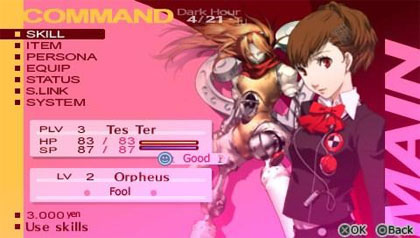
But don't worry; this is not a suicide simulator. In order to summon your personas, each character is required to use a gun-like device called an Evoker. These personas work like magic, where you can use spells on bad guys and heal up your squad. On top of using the personas, each character has their own weapons, usually ranging from swords to bow and arrows. Together the battles are a combination or melee attacks and large beasts pulling off magic spells, an interesting mix that makes each encounter fun to watch.
Your personas are the manifestations of everything that you are, so you will need to improve yourself as a person in order to upgrade attacks. You can rework and tinker with your personas whenever you want, so it's important that you work towards making it the best persona it can be. You do this by taking in clubs, going to class and having an active social life. It all plays into who you are as a demon hunter.
Before long you'll realize that your days are starting to get cluttered. Not only do you need to go to school, attend class and sleep, but you may also want to take in after-school activities like clubs, student council, part-time jobs, online video games and hanging out with friends. And don't forget that in the middle of this you still have to scale the tower of Tartarus and beat up baddies. How are you going to fit all of this into your schedule?
The answer is simple, you can't. Persona 3 makes you pick and choose your activities and not over-schedule your life. I don't care if you do want to get into a good university after high school; the fate of the world rests on your shoulders. You can't go out hunting if you're too tired, and staying up late every night will make you fall asleep in class. This is a game about balancing all of the elements of teenage life, which is not too far off from what most teenagers experience every day.
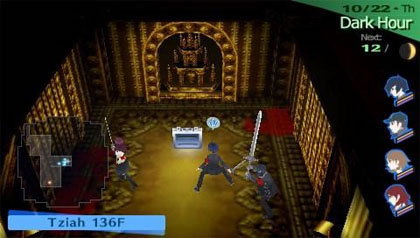
The reason this works so well is because I genuinely cared what happened to these teenagers. It's rare for me to get so invested in a bunch of high schoolers, especially in a Japanese role-playing game. But I really connected with the plight of our hero. As soon as I saw how his everyday interaction influenced his demon hunting, I had no problem taking this game serious. It doesn't hurt that all of the school parts are wonderfully written and full of humor. Figuring out how I was going to spend my day is just as exciting as deciding on what attack to use in the heat of battle.
When you're done studying and hanging out with friends, it's time to get serious and take to the mysterious tower of Tararus. We learn that each day the tower completely redesigns itself, so the layout of each floor is completely random. That's probably for the best, because much of this game involves you running around these labyrinthine corridors battling monsters and looking for the stairway to the next floor. There are no random battles; you will be able to see all of the monsters before you run into them. And once in battle you are free to put the game on auto-pilot, if you're the kind of person who plans on doing a lot of grinding.
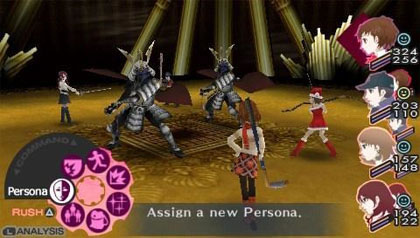
But remember, fighting in the Dark Hour is extremely tiring. Your team can only go so far before they will need to head back to the dorm for some shut-eye. It's this time limit that gives the game its urgency. You know you can't get everything done in one night, so you will need to plan your schedule to get back there and finish the job. But it's not that easy, because you're being pulled in all different directions.
As you progress through the game you will discover that there are two things you can't escape -- a full moon and finals week. You see, every time a full moon rolls around you'll need to go head to head with a large boss. This is how you will advance the story and make it even further into the tower. Knowing that you have this deadline adds even more stress. And speaking of stress, let's not even get started on the hell that is finals week.
Of course, fans of the PlayStation 2 version of Persona 3 will already know all about the story and gameplay. For the most part this is a faithful port of the four year old console game. It makes a few concessions for the handheld and it adds some content, combing elements of both Persona 4 and FES to make an even stronger experience.
We'll start with the good news. For starters, Persona 3 Portable now features a second playable character. In the original game you could only play as a teenage boy, but in this portable version you can choose an attractive young girl. This drastically changes the way the story plays out, offering a chance to socialize with different people and have a much different dating experience. This also gives veterans of the game enough of a reason to go back through the adventure. You'll find that there are a bunch of new activities and jobs to do after school, making this a much fuller experience.
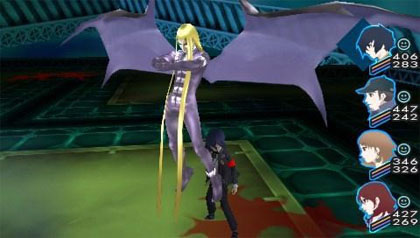
There have also been a few major tweaks to the combat system. Taking a page from Persona 4, you are now able to control each character in your squad. In the original version the computer controlled most of your team, but in this PSP port you choose which way you prefer. There are also a few other changes made to the combat, such as the ability to guard ailing characters from taking a fatal blow.
In order to fit all of this content into one small package, Atlus has been forced to make a few cuts. The most controversial cut was the way you navigate through the world. Instead of seeing everything in 3D, you now travel the world via a cursor. You drag a large circle all around an overhead layout, clicking on different people or marks that will take you to different parts of the school, dorm, mall, you name it. For some odd reason this has upset a lot of Persona 3 purists, but I found it a lot easier and faster to get around. Scrolling around the screen with a cursor really sped a lot of things up, which is probably for the best when you're playing it on a handheld system.
Despite being based on a four year old game, the presentation is top notch. The tower sequences look good and the combat runs smoothly on the PSP's small screen. You'll find that most of the school elements are done through still images, but even those look sharp and are nicely detailed. Persona 3 Portable may not be as shiny as Crisis Core or Peace Walker, but it more than holds its own in the looks department.

The game's soundtrack, on the other hand, is outstanding. The music is made up of all kinds of interesting tunes, including Japanese rap, jazz, funk and pop. It's all over the place. The soundtrack won't be to everybody's liking, but I admire how unique it is. I'm also impressed with the level of voice acting, which is a lot better than I was expecting. The line reading is good, which is a treat given how much spoken dialog is in this game.
Even with some downsizing, Persona 3 Portable manages to be an incredible port of one the PlayStation 2's best role-playing games. Best of all, it adds enough new content to warrant a second look for anybody who played through the game years ago. This is the most compelling role-playing game to come out of Japan in ten years and a must-own for PSP fans around the world.
HOME |
CONTACT |
NOW HIRING |
WHAT IS DEFUNCT GAMES? |
NINTENDO SWITCH ONLINE |
RETRO-BIT PUBLISHING
Retro-Bit |
Switch Planet |
The Halcyon Show |
Same Name, Different Game |
Dragnix |
Press the Buttons
Game Zone Online | Hardcore Gamer | The Dreamcast Junkyard | Video Game Blogger
Dr Strife | Games For Lunch | Mondo Cool Cast | Boxed Pixels | Sega CD Universe | Gaming Trend
Game Zone Online | Hardcore Gamer | The Dreamcast Junkyard | Video Game Blogger
Dr Strife | Games For Lunch | Mondo Cool Cast | Boxed Pixels | Sega CD Universe | Gaming Trend
Copyright © 2001-2025 Defunct Games
All rights reserved. All trademarks are properties of their respective owners.
All rights reserved. All trademarks are properties of their respective owners.








